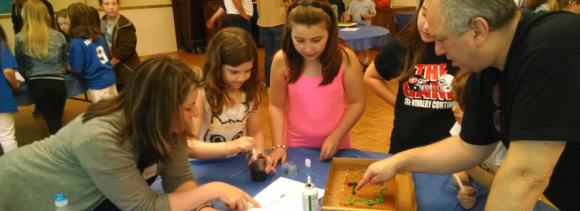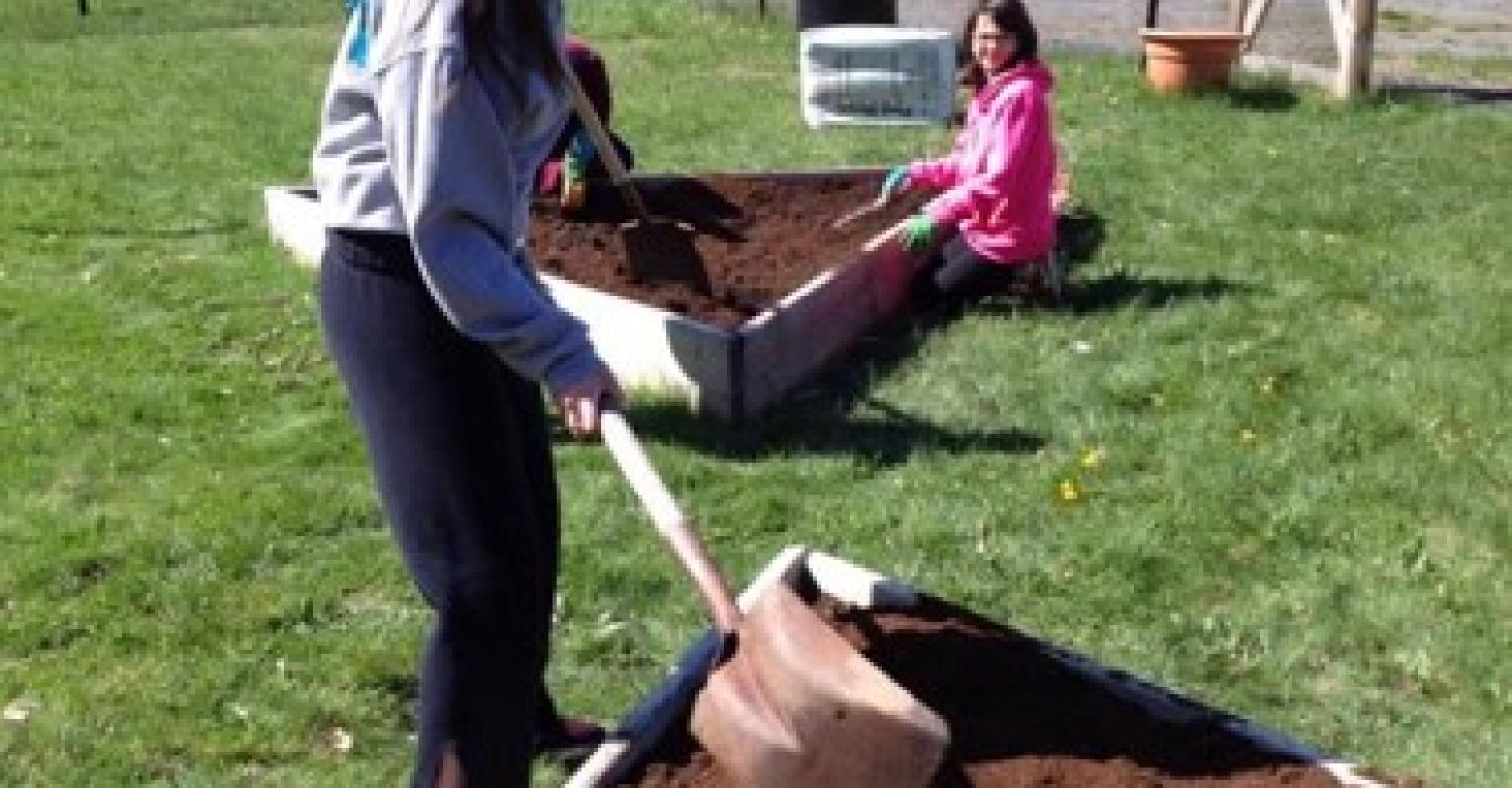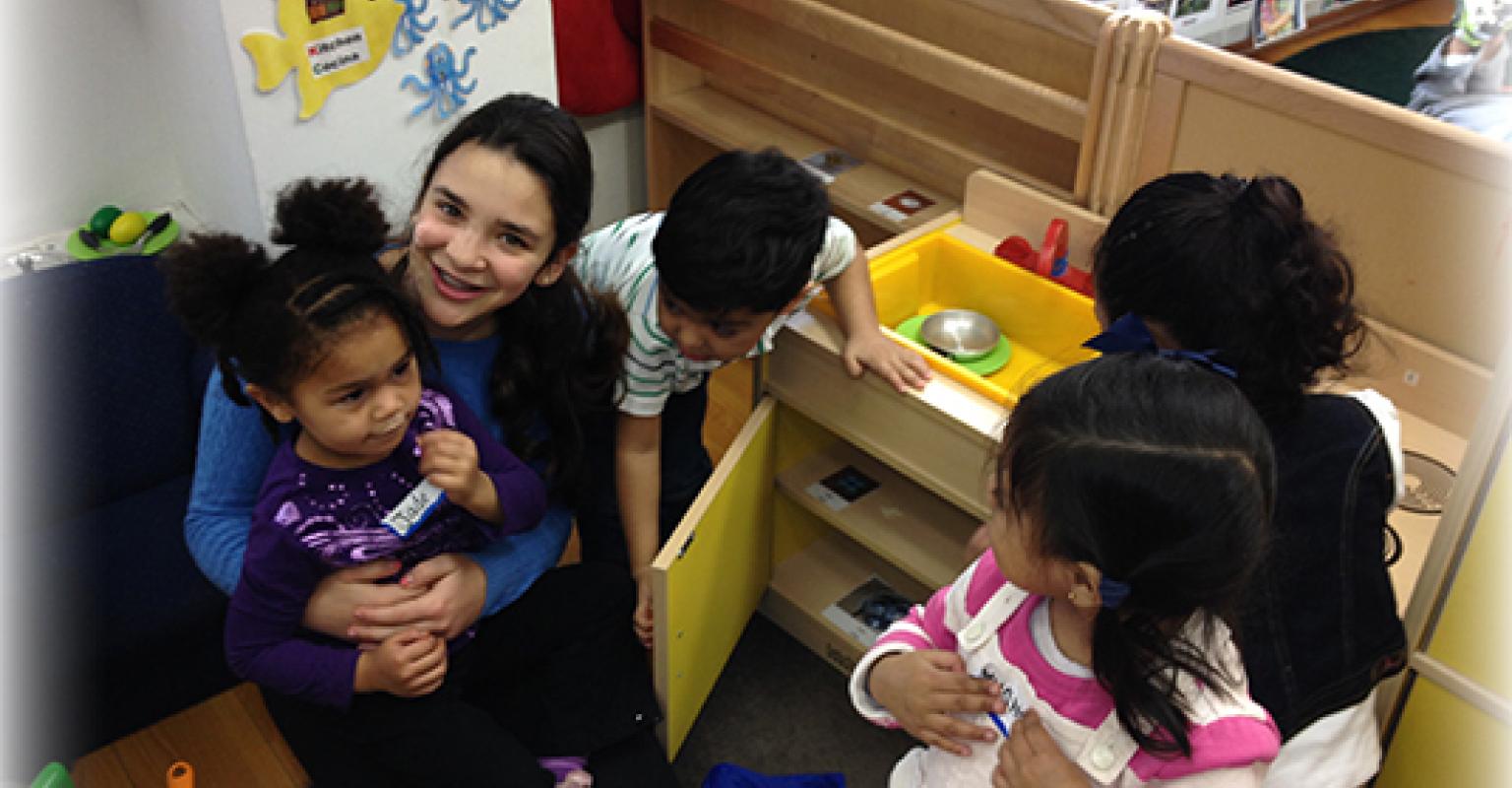Service Learning Model: J-Life
Tikkun Olam Community Synagogue of Rye, NY

Model description adapted from The Express Innovation Guidebook, 2011.
Model Summary:
J-Life is a grade-based series of innovative parent-child experiences held on Shabbat mornings that engage families in life-long family learning. It was developed by the Project Re-Imagine Committee and provides guided Jewish living experiences that build a sense of community and support parallel family learning both in and out of the synagogue. J-Life: Tikkun Olam engages families of 2nd graders.
Congregation’s Priority Goal:
To foster the creation of sacred relationships, and to give people the tools and resources to be God’s partner in healing the world.
What were You Trying to Achieve with this Model?
-
To give parents an opportunity to learn alongside their children.
-
To provide opportunities for children to see their parents as Jewish role models, applying Jewish teaching to their daily lives.
-
To build community among families, strengthening the connection to each other, and to the congregation.
-
The learning represents elements of the congregational vision developed during participation in The RE-IMAGINE Project.
Relationship of Model to Congregational Learning System:
-
All families participate J-Life; 2nd-grade families participate in J-Life: Tikkun Olam.
-
In the Tikkun Olam (repairing the world) year, 2nd-grade families participate in Mitzvah projects connected to congregation-wide holiday celebration.
-
Teachers work to integrate J-Life learning into the regular Center for Jewish Learning sessions as well. (The Center for Jewish Learning replaces the traditional religious school.) They now perceive J-Life as an enhancement to their regular teaching rather than as an unrelated add-on. As this understanding deepens, they find more opportunities for integration throughout the year.
Who are the Learners?
-
Families of 2nd graders
-
Older siblings attend regular Center for Jewish Learning classes.
- All families in the Center for Jewish Learning are expected to participate in J-Life sessions which happen across the grades. Typically at least one parent is present at each session.
Who are the Educators/Learning Facilitators?
-
The 2nd-grade teacher from Center for Jewish Learning helps to facilitate learning.
-
The Family Educator designs the lessons and facilitates.
-
Cantor provides musical enrichment.
-
Occasionally outside speakers are invited to work with families.
What is the Learning? How is it Designed?
-
Community building a key component among and between families and their children.
-
Key questions include, “How will this be meaningful for your family?”
-
All sessions begin with 15 minutes of schmooze time for parents with coffee and a light snack.
-
Primarily informal learning.
-
Combination of parallel and shared learning for parents and children.
-
Learning is organized in one of three ways. In scenario one, parents begin with the Family Educator while children are in the classroom with their teachers followed by a joint activity in a large group space. In scenario two, kids and parents begin together for a large group introduction and then divide into groups and rotate through stations facilitated by teachers. In scenario three, kids and parents are divided into groups and remain together in one location throughout the morning, all doing the same learning.
-
Parents are asked to do some preparatory reading for each session. Educator sends a follow-up email recapping each session and providing suggestions for further reading or relevant resources.
-
Tikkun Olam projects are organized by parents with one parent per site coordinating scheduling and supplies as necessary.
-
Families are also encouraged to participate in the congregation’s Gleaning experience – harvesting vegetables at a local farm to be donated to area food pantries.
Where Does the Learning Happen?
-
All J-Life: Tikkun Olam sessions are held in the synagogue.
-
Various spaces in the synagogue are utilized including classrooms and large group spaces.
-
Tikkun Olam projects take place at various sites in the community.
-
In the coming year, one session will be off-site at a local nature preserve.
When Does the Learning Happen?
-
During Center for Jewish Learning hours on Shabbat morning, 8:45-10:45 am.
-
There are four or five sessions during the year.
-
Family involvement in Tikkun Olam projects is at their convenience.
-
Originally all sessions occurred consecutively in order to build community. However, ongoing assessment of the model led to scheduling 2 sessions in the fall and 2 in the spring in addition to the 1-2 Tikkun Olam experiences.
What is Inspiring about This Model?
-
J-Life is now understood as a core element of congregational culture.
-
Students appear more connected to Jewish learning.
-
Teachers now see the importance of regular communication with parents.
-
Impact on parents varies – for some, the experience transforms their practice, for others, it leads to increased involvement in the congregation.
- Most families value the opportunity to learn as adults and with their children.
Professional Learning:
-
Teachers work with the Family Educator during their orientation at the beginning of the year to review lesson plans. Some require a clear script for their role in a given J-Life session while others are more comfortable adding their own voice.
- Ongoing professional learning supports teachers’ growth in working with parents as well as children.
Key First Steps and Recruitment Plan:
-
During the summer prior to launching the model, a lay implementation committee met regularly initially calling the model “Jewish Learning for Jewish Living.”
-
J-Life involved only 1st and 2nd grades.
-
Decided to begin with tikkun olam as content since it represented a gateway that all participants could be comfortable with regardless of their Judaic knowledge base.
-
Families received many forms of communication to encourage them to participate, to clarify expectations for parent involvement, and to share the calendar.
- Families completed feedback sheets at the end of each session to allow the implementation committee to assess successes and emerging challenges.
Role of Governance and Clergy:
-
J-Life committee is made up of lay people whose children are in grades K-6, the committee is a sub-committee of the Center for Jewish Learning committee.
-
J-Life committee offers constructive feedback and input for future programming.
-
Members take on some hands-on roles as necessary, help with communication, and draft a survey for feedback from parents each year.
- The Family Educator meets with the J-Life four to five times a year. A member of the committee reports into the Center for Jewish Learning Committee around successes and challenges. Currently, there are no teachers on the committee, but that may change.
Budget:
-
The primary cost is staff – Family Educator and time of Rabbinic Intern
-
Approximately $200 for materials
- Funds were also needed for a J-Life brochure that describes all J-Life offerings across the grades
Hiring Needs:
-
Babysitting is provided for younger siblings by teen madrichim (counselors)
Additional Notes:
-
Ongoing assessment of the model provides a key input as to how closely the model remains aligned to the congregational vision.
- Communication continues to be a key component of managing the model. Families receive a detailed J-Life brochure including a calendar at the beginning of the year, a letter from the Director of Education and one from the Family Educator, an invitation for parents from their children, as well as several emails to support preparation and follow-up for each session.
How Do You Describe Your Congregation?
Community Synagogue of Rye is a Reform congregation with approximately 460 family membership units. There is a senior rabbi, a rabbi of professional staff/youth engagement, a cantor, education director, director of Jewish family life, and senior youth group advisor.
- Models-In-Action
- Intergenerational Learning
- Shabbat
- After School and Beyond
- Congregational Learning
- Family Engagement
- Educator Training
Discover more

In Service Learning Models the obligation to engage in tikkun olam, repairing the world, serves as the focal point for learning.

Congregation Kol Ami White Plains, NY. Mesorah (tradition) is a choice-based model for 7th-12th graders that includes CORE learning and hands-on, experiential, project-based learning electives.

Congregation Emanu-El of NYC. 8th graders explore different ways of doing social justice including fundraising and philanthropy, community organizing and advocacy as well as the Jewish context for these approaches. They volunteer throughout the year.
